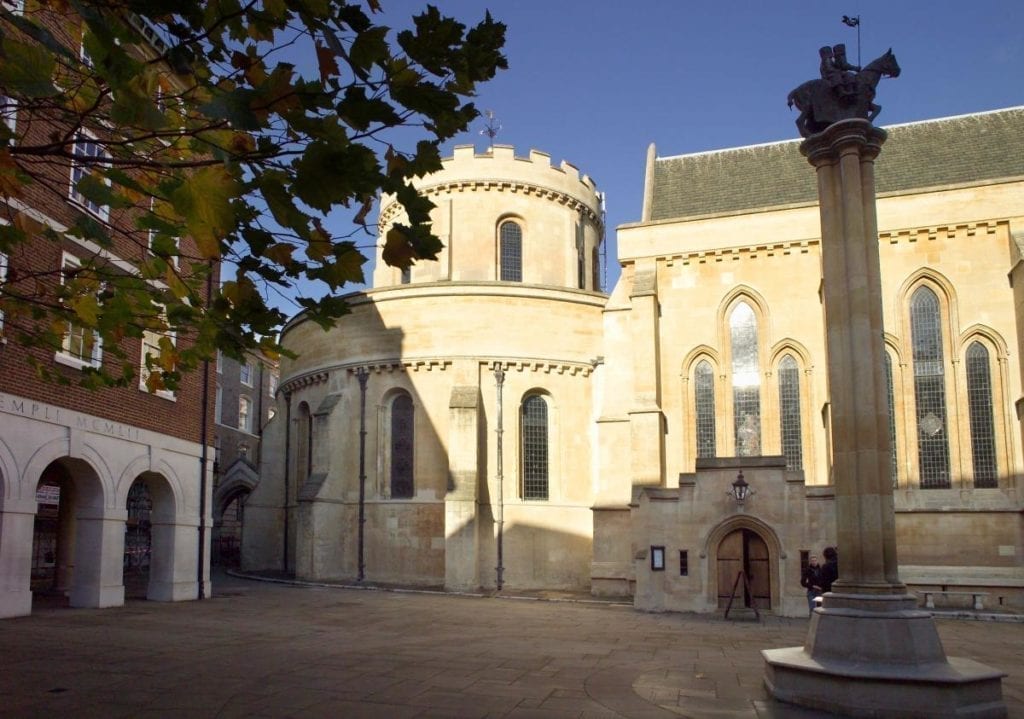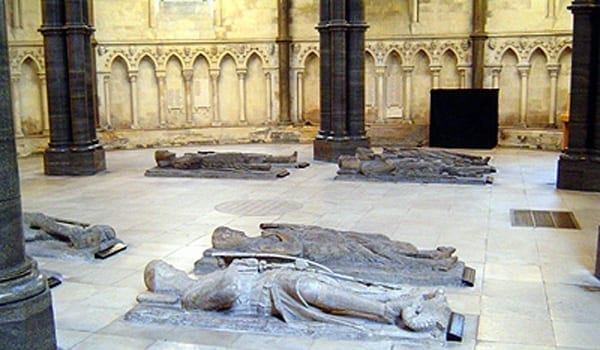The commandery of the Temple of London has its origins in the house of Holborn founded in 1128, shortly after the passage of Hugues de Payns in England. Having become the administrative center of the Order in England, the commandery, too narrow (now Old Temple), was moved in 1161 to its present location, between Fleet Street and the Thames, on land granted by King Henry II Plantagenet (New Temple). The church, consecrated in 1185 in honor of the Virgin Mary, has a circular plan and is an evocation of the Holy Sepulcher of Jerusalem. Close to royal power, New Temple served as a bank for the king, who deposited his treasure there. In 1215, during the revolt of the barons that was to lead to the conclusion of the Magna Carta, John the Landless found refuge in the Temple of London.
After the suppression of the Order, the London commandery was transferred in 1324 with all its possessions to the Hospital. In 1540, the Order of the Hospital was suppressed in England along with all the religious orders. New Temple was then rented to the lawyers of the London bar, the Inns of Court, who still occupy the premises and the Temple Church was made their private chapel, served by a clergyman, called the Master of the Temple. The church, seriously damaged during the German bombing of London on May 10, 1941, was restored in the 1950s. It preserves a series of 10 marble tombstones of knights from the 13th century: they are not knights of the Temple but English barons who were buried there, including William, Earl of Pembroke and Marshal of the Kings of England from 1194 to 1219.
Temple Church has been a member of the Templars Route European Federation since 2018.
Its church is open daily.





